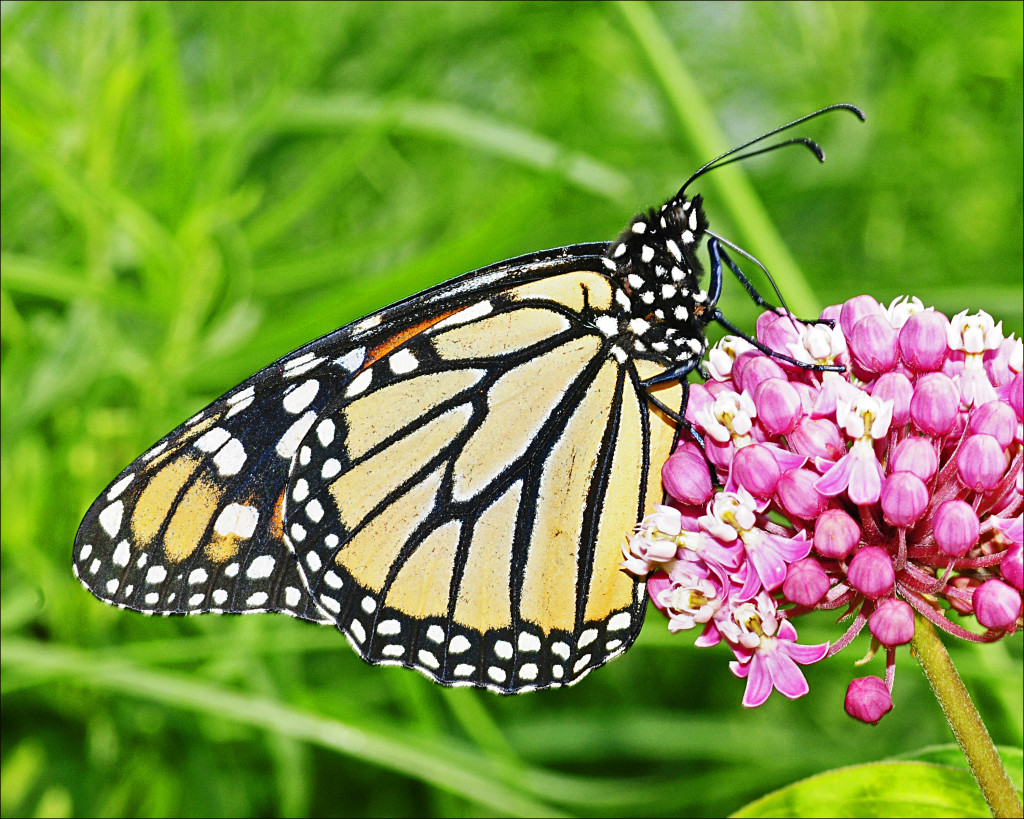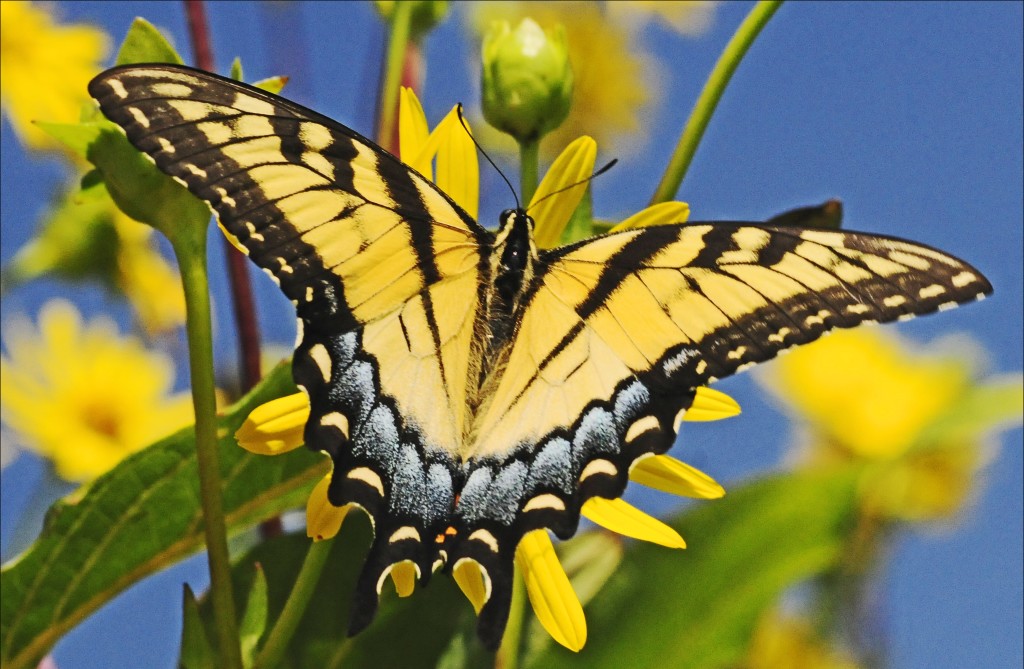In a recent post I listed seven principles for churches to use in making their landscaping decisions. When I then used those principles to look at the message the typical lawn-dominated church landscape sense, I concluded that churches, whether they mean to or not, are communicating that fitting in with American lawn culture is more important to them than fidelity to a whole faith in God that includes a concern for God’s earth.
I’m following up on that post here by simply sharing two photographs of butterflies taken by my friend Joan Sayre and providing a bit of commentary.
Monarch butterflies are beautiful creatures with a complex, intergenerational migration cycle. This video tells the story of that migration cycle in a way that I’ve not seen before and that I urge you to watch. As the video mentions in an offhanded way, their long-term survival is in question as their numbers have been declining.
For monarchs to survive, they need milkweed plants for their caterpillars to eat, and they need other plants with nectar (these are primarily native plants) for the adults. People in North America, by displacing habitat and by how they landscape and by how they farm, have created a landscape that is largely void of milkweed and other native plants. Imagine shopping for food and discovering that the only grocery stores available are hundreds of miles apart and each is the size of your bathroom.
I’m happy to say that there are people around the country who are creating butterfly gardens and restoring natural areas. Check out this story about a church that recently created a butterfly garden on its ground that has been certified by the National Wildlife Federation.
This second photo is of a eastern tiger swallowtail on the yellow flower of a prairie dock, a native wildflower.
This kind of butterfly is more flexible in terms of the plants on which its caterpillars can feed but the core message is the same – for both the caterpillar and the adult stage, having access to native trees and wildflowers is a necessity. I’ve been delighted to see the eastern tiger swallowtail in our yard on the prairie blazing stars and other native wildflowers we’ve planted.
I share these photos for two reasons. One is simply for you and I to take a moment to be grateful for the sheer, extravagant beauty of life on God’s earth.
The other reason is to remind you and I of what is at stake in our landscaping choices for our churches, our home landscapes, and even our communities. The lawn does not sustain either of these creatures in any way at a time when the world is increasingly hostile to their ability to live. By deciding to give some of our landscapes over to native plants (and by supporting native habitat preservation and restoration in our communities), we can be good stewards for creatures like these and give them at least a better chance of survival.
Which kind of landscape will you and your church choose?






